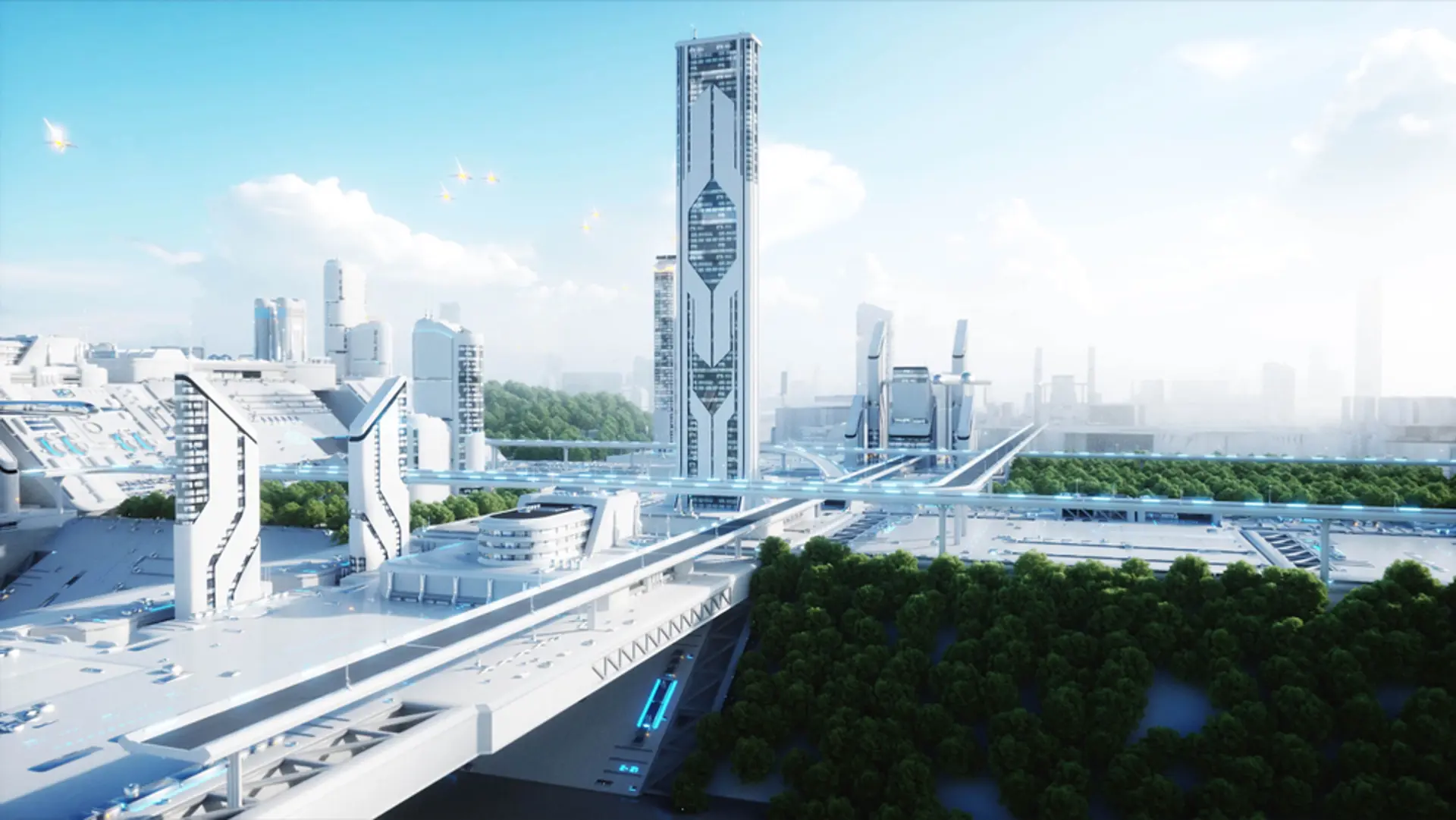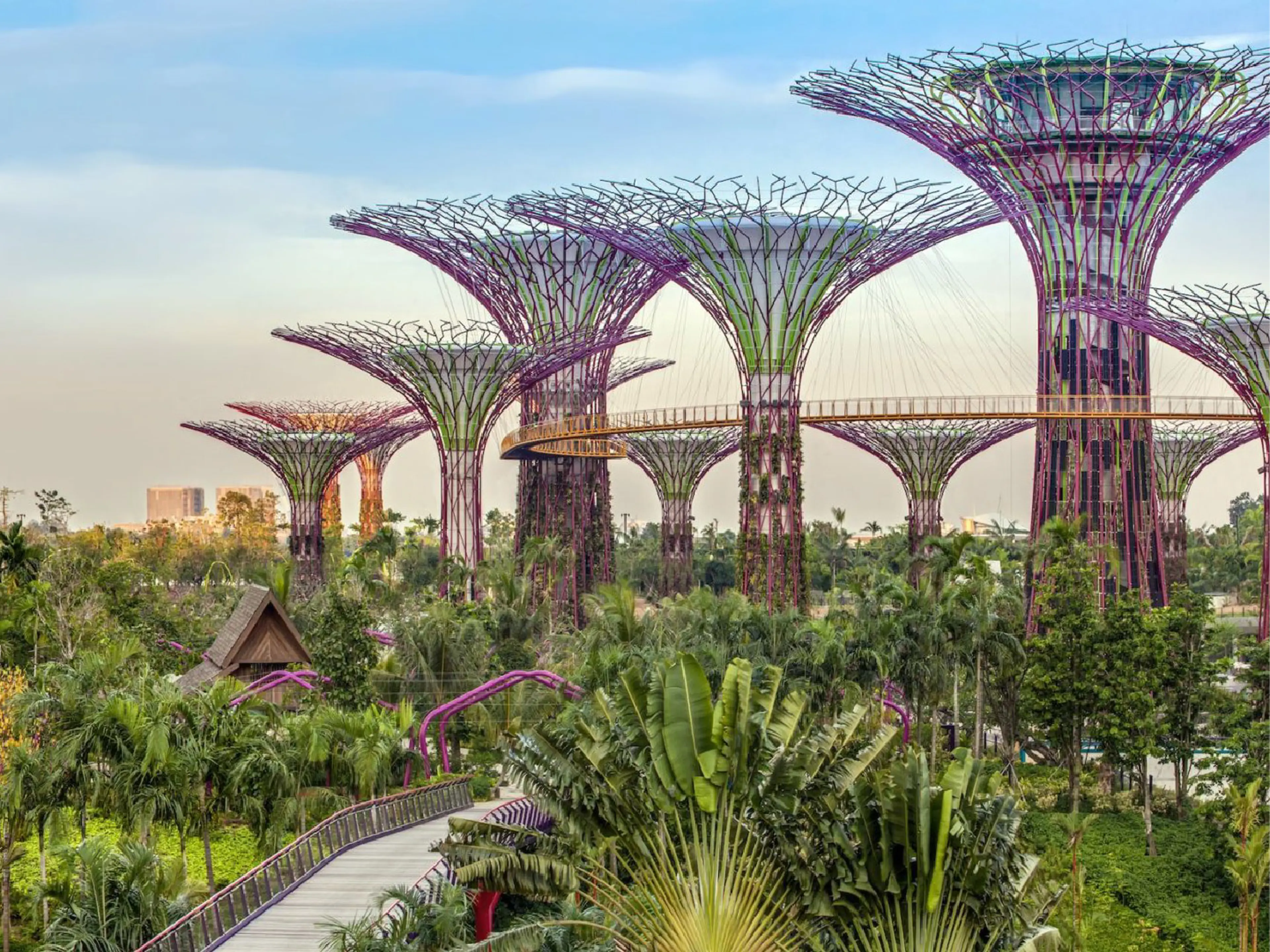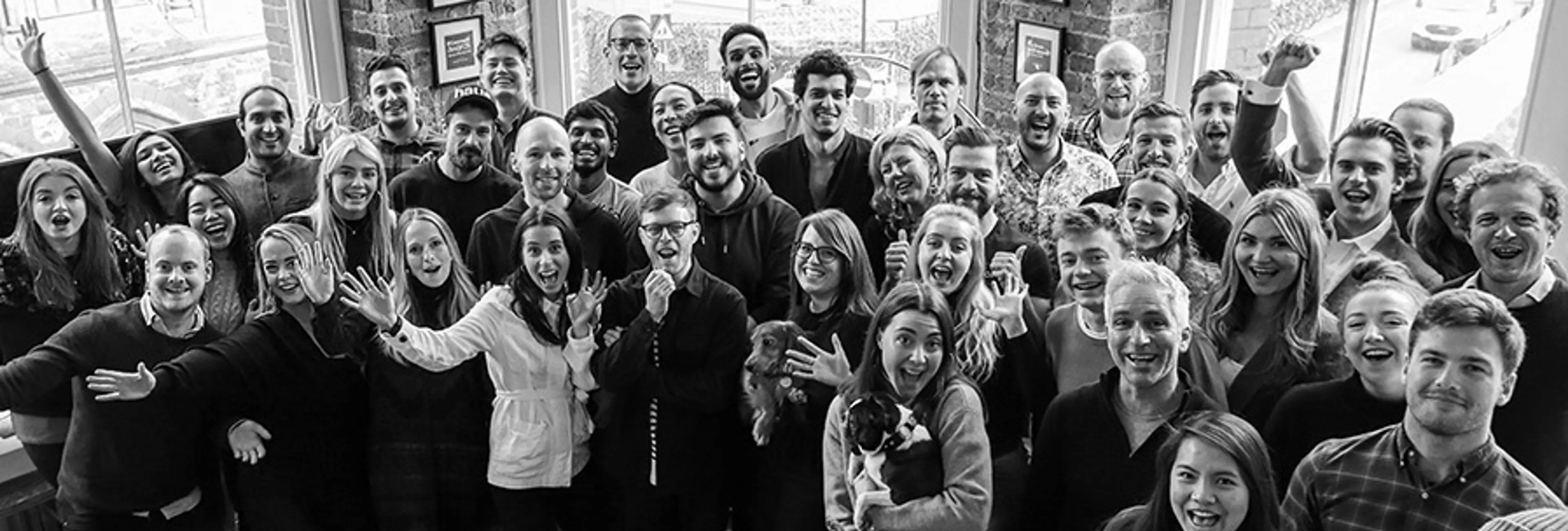
Tech & Innovation
1 Jul 2022
5 Min Read
The Future of Sustainable Cities
In 2015, the UN’s 193 member states agreed on 17 Global Goals designed to ‘achieve a better and more sustainable future for all.’ Number 11? Make cities sustainable.
All over the world cities are facing severe challenges, from unplanned urban sprawl, unaffordable housing and unmanageable service demand to unequal spread of resources and inadequate urban infrastructure.
By 2030, 60% of the world’s population will be living in cities compared to just over half at the moment and that 10% growth is predicted to more than double by 2050. Currently, our metropolitan areas contribute 70% of global carbon emissions and account for 60% use of resources.
For those taking the climate emergency seriously – a number that has boomed post-pandemic – there is a consensus that cities need to be central points of change. Perhaps due to the incredible rejuvenation a number of cities experienced during COVID-19 lockdowns, from Venice’s clear water canals to LA’s smog-free skyline and nature’s return to cities: peacocks roaming the streets of Dubai, deer dodging the minimal traffic in Nera, Japan, a wild puma checking out the centre of Santiago in Chile, presumably confused by the empty city.
Because of these environmentally positive changes along with the global decrease in air pollution we saw during the pandemic, there are already significant global and local efforts to combat the crisis at city-level. A network of 100 mayors from world-leading cities, known as the C40 Cities initiative, is dedicated to science-based and people-focused solutions to limit global heating and ‘build healthy, equitable and resilient communities’.
Just as leadership is occupying a large role, businesses doing the literal groundwork will possess as much responsibility to create sustainable cities that prosper. Property development brands that are playing in this space need strategic and experiential branding that reflects the pioneering work they’re contributing to make the world a better place. As central dictators of our future world’s design, their positioning must emit excellence, expertise and appeal to all.
Why We Need To Design Sustainably
With the countless challenges facing our planet, enacting change now is absolutely essential. Among the nuances and differing perspectives, experts can all agree on the need for sustainable cities that nurture both the needs of the present and future generations.
From resilient infrastructure and food/fuel supply to liveability and community creation, design is a fundamental aspect of creating our future cities with the flexible elements needed to withstand the effect of time, climate change and other global shifts.
What Cities of the Future Could Look Like
More than clever reframings of sci-fi visions, the city designs of our future must be liveable, sociable, sustainable and resilient and this isn’t that radical of an idea. We’re already seeing action taking place in some parts of the world plus an increase in sustainable plans for cities across the globe. For example:
Zero-Emission Roads
Zero-emission zones could balloon to include whole cities. Saudi Arabia’s zero-carbon city, The Line, intends to have no roads or cars with every daily need being within a five minute walk from residents’ doors to maintain a hyperconnected community.
Other future city plans are focused on streamlining multi-mode transportation with mobility-as-a-service (MaaS) platforms. Platforms would connect travellers to multiple forms of transport with a single ticket, from car shares to micro-mobility devices like e-scooters.
Autonomous smart city systems allow surroundings to respond to events in real-time making for more efficient urban centres. Planners predict using tech and data to deconstruct traffic when it happens could reduce emissions and fuel consumption by 20%.

From Grey to Green
Appetites for walkability, inclusive access to green spaces and safer city cycling are growing rapidly, with Athens being one of the first to release ambitious plans of reallocating 50,000 square metres of city space, liberating it from cars and prioritising pedestrians, cyclists and greenery.
Coined the ‘emerging eco-urbanite mindset’ by Stylus, nurturing nature and increasing green spaces in metropolitan areas is in rising demand. Pandemic panic buys gave way to a green-thumbed GYO (grow your own) crowd while calls for equitable green spaces that satisfy nature therapy have become deafening post-lockdown.
Embracing our natural surroundings – or reintroducing it – will not only improve ecosystems and improve biodiversity but urban forests have the potential to improve air quality, mitigate flooding, reduce water scarcity, regulate temperature as well as providing vast wellbeing benefits and community connection.
A Clean Energy Revolution
The city of Helsinki is currently mid-construction of their ‘Hot Heart’, a flexible, floating reservoir system that converts carbon-free electrical energy into thermal energy and is intended to cover the city’s heating demand by 2030.
In Porto, the city plans to begin generating power from photovoltaic cells on the surfaces of public buildings and as of 2021, the system has produced enough energy to power 2,000 homes across the city.
Malmö, Sweden is another city well on its way to being an emission-free metropolis. Energy company E.ON is constructing a system that will use deep geothermal energy to power the district heating network and should be fully operational by early 2023.
ECOncrete Jungles
A reexamination and transformation of the way we use materials is already underway, with a new material known as Environcrete by Boral designed to use waste materials in the manufacturing process to reduce the environmental impact.
Another concrete alternative, ECOncrete, is a high-performance solution for marine construction, building stronger, greener, more responsible underwater infrastructures. A technology that could be introduced in future city architecture.
Other material innovations include revolutionary road surfaces, such as the Australian innovation Reconophalt which not only cools the surface of every street by reducing heat absorption, but also constitutes a triumph of waste recycling.
A kilometre of two-lane road built with Reconophalt integrates 500,000 plastic bags, 165,000 glass bottles and toner from 12,000 used printer cartridges that would otherwise have gone to landfill.
Collaborative Communities
Current iterations of urban design are placing community co-creation at its heart. While incorporating tech that enables communities to make responsible lifestyle decisions with ease is still a priority for planners, the collaboration element is the defining feature of this ‘third generation’ of sustainable city creation.
Connection is one of four key tenets of creating integrated places. Urban designers who can cultivate a sense of civic meaning and belonging in their designed spaces will inspire collective investment, shared sense of ownership and powerful care for the place.

What are the Challenges Facing Urban Designers?
1. Data Privacy Fears
One of the earliest onset obstacles for smart sustainable cities of the future is a general anxiety over data privacy. While some may be content to risk privacy for a more efficient, earth-kind way of life, others aren’t so sure.
In every way, smart cities will heavily rely on large collections of citizen data to function optimally and there’s no way to halt the oncoming tide of intense tech integration to cities. As in other industries, tech is a huge part of urban design’s future.
Significant efforts to counteract this fear lie primarily with law-makers and regulators that will need to make privacy orders and controls standard. What designers can do is design with privacy in mind.
Consumers don’t mind sharing their data with the right, tight protections. 70% of Americans are happy to share their data when they believe the exchange will benefit them, and sustainable cities of the future will be purely benefits-based by the right designers.
2. Affordability
In the UN’s breakdown of their eleventh Global Goal, the first two points orbit around cost. Of housing, basic services, transport and so on. All things that many of us consider a right.
Designing these future cities, with next-generation tech, new materials and people-centred purpose naturally has a high price tag in a world where many already struggle to afford the ‘basics’.
While plans for the future are really exciting and smart cities will be much more affordable and sustainable in the long run, it may be a case of not getting ahead of ourselves.
Designers with ambitions of futuristic utopias add real value to city visions but those ambitions could be better placed towards solutions for urban slums, alleviating vulnerability and safeguarding our planet right now.
Building sustainably for the future should also mean a deep awareness and understanding of our present.
3. Need For Holistic Approaches
Global efforts are being made to transform cities into more sustainable, equitable and enjoyable places to be, with the hope that these efforts will act as a crucial contribution to slowing and ultimately solving the climate emergency.
Sometimes design can be fairly anatomical, especially when the scale is literally city-wide.
We need designers to examine our city ecosystems holistically, ensuring that every aspect of the system is working in tandem for its people and planet.
As community co-creation becomes increasingly visible and championed in smart city development, the bottom-up approach to innovation, particularly including residents in design decisions, makes for enhancing live, work and play spaces for all.
4. Balancing Progress & Pressure
Designers need to strive for a more thoughtful model of urbanisation. Smart, sustainable cities will be highly appealing, and that’s the point, but without considerate parameters, the pressure will stall, and maybe even derail, progress.
Stakeholders at every stage of city planning must work collaboratively to maintain the balance between speed and urgency – it’s a climate emergency after all – and building pressure on pre-pressurised functions like water supply, sewage, the living environment and public health.
What’s the point of generating efficient, fruitful solutions for current pain points if those pain points cause collapse before any solution can take effect?
Balancing progress and pressure will be a constant challenge for designers, planners and city leaders but with visions clear as day and many initiatives already working their metropolis magic, the reward outweighs the risk and sustainable cities are the future.
If you'd like to discuss how we partner with timeless luxury brands to provide brand strategy, digital experience design and innovation consultancy, please get in touch via [email protected] to arrange a time to speak with our team of consultants about our services.
Tech & Innovation


